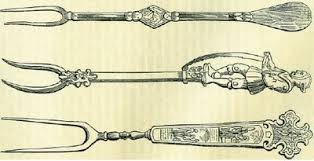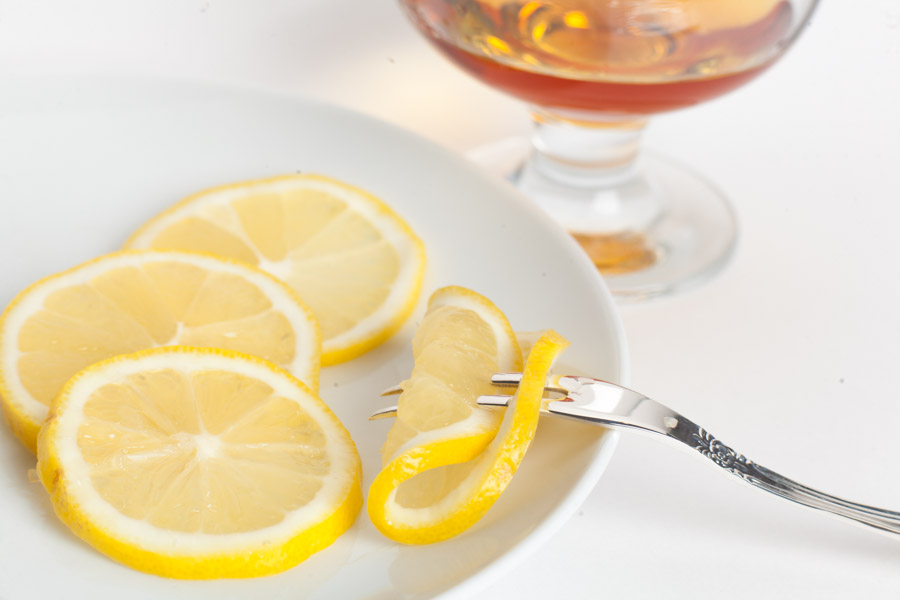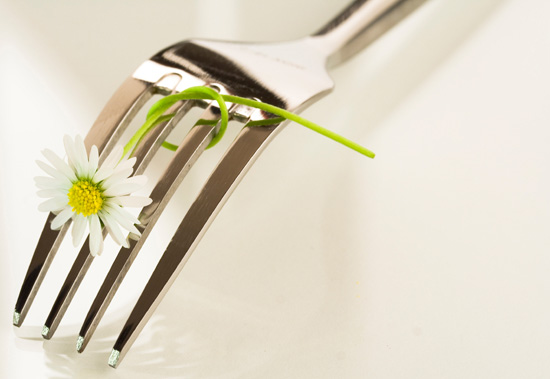The history of forks
A fork is a table utensil, which consists of a handle and several narrow tines.

Nowadays, it is very difficult to imagine any meal with a fork. Before, however, spoon and knife were the main tools for eating. For cutting something in smaller pieces, two knifes were used: one for cutting and one for putting the food to the mouth. However, most of the food was eaten by hand. In 16th – 17th centuries, the rules of etiquette prescribed to take the meat off the plate with three fingers and then rinse them in a special bowl with water. For a period of time, people in rich homes in Europe eat with gloves, which were thrown away after the meal. It is interesting that forks already existed at that time, but they were only used in the kitchen to carve, hold, serve or spread the food. As a rule, such forks only had two tines.

There is evidence that a serving fork already existed in Ancient Greece and Rome. She first had one and later two big straight tines on a long handle. In one Italian museum, one can see a fork of more than 2500 years and which was found in one of the tombs of the ancient city of Paestum.

The first mention of forks used for eating goes back to the 11th century AD. It is believed that the Byzantine princess Maria Iver was the creator for this, as she considered it humiliating to eat food with her hands. A special fork in gold and one in silver were made especially for her. The handle was made of ivory, with decoration in mother of pearl. It was this Byzantine princess who introduced this two-tined fork to Venice, but Italians initially reacted to it as an attribute with a certain effeminacy and affectedness.
In 1360, during the reign of Charles V, forks appeared in France, but their use was not so common. Until the early 17th century, a fork was seen as some kind of luxury of whimsy rich spoiled people, and the Catholic Church called people using a fork even atheists. The expression "the devil's fork" most likely finds its roots precisely in the rejection by the Christian faith of ancient Greece, its culture and pantheon of gods, and all that was associated with them (the fork is associated with the trident of Poseidon).

There is still an aura of negativity around the fork even today, as it is associated with bad things. For example, dropping a fork is considered an omen for misfortune, and given a fork as a present is seen as a sign of arrogance.
The fork 'set foot' in Europe in the 18th century. Although it had existed for a much longer time in the kitchen, it was used for other purposes.

The fork in the fork as we know it today with its curved tines appeared for the first time in Germany in the 18th century. Also the number of tines (four) was set around the same time.
In 1860, England started a mass production of silver and silver-plated cutlery, which always included forks. In 1920, the production of cutlery in stainless steel started.

It is noteworthy that the objection to using forks survived for a very long time. For example, as late as 1897, the statutes of the English Navy sailors forbade to eating with knife and fork, as these utensils, according to the Admiralty, destroyed the discipline and engendered effeminacy among the lower ranks. Also in most charters of monasteries, it was expressly forbidden for monks to eat with a fork.
The traditional positioning of the fork on the table is another interesting fact. As a rule, one had to put the fork with the tines down in the past. There are several possible reasons for this custom. One is that during one of the feasts of King George V of England, the King banged his hand on the table during a moment of anger and discontent and pierced his hand with the tines of the fork which was laying on a plate. It was then that he issued a decree to put the fork with its tines down.

According to another theory, this is connected to the logos of companies and heraldic emblems stamped on the back side of the utensil. In order to show the origin of the fork and the status of the owner, they were put on the table with the tines down. As a matter of fact, in France, this position of putting forks is still considered to be the correct one.
According to yet another version, the forks were put down like this in order for the guests not to anticipate any animosity.
Quite often it was possible to identify spies just by the way how they were putting the fork with the tines up or down.
The size of the cutlery also had an impact on the status of its owner. It is a wellknown fact that forks of royal dinner sets of the 17th – 18th centuries were almost twice as big as the contemporary ones.
Currently, according to the etiquette in most countries, one should put the fork with the tines up, in order not to damage the table cloth.
As modern tables can count as much as ten different forks, we want to help you a little bit in understanding the differences between them.

Please pay attention to the quality standards of forks, which are of the highest level in Robbe & Berking cutlery:
- The tines of the fork should be sharp;
- The bending of the fork is made a little thicker, as under no circumstances should the fork bend;
- The interior side between the tines has to be polished, as else it would be extremely difficult to wash them;
- Forks should also be a bit thicker at the most exposed sides, as this also increases their lifetime.

Table fork
- Designed for any type of main hot dishes;
- 20.5 cm;
- This fork has four tines;
- Her length is a bit less than the diameter of a normal plate;
- Put to the left of the plate, and if there are several forks on the table, then this will be the one closest to the plate.

Fish fork
- Used for hot fish dishes;
- 17-18 cm;
- This fork has four short tines;
- She is a little bit shorter and wider than an appetizer fork. Depending on the type of fish, its look may be different;
- The fork may have rounded edges or small special hole in between the middle tines (to separate fish bones);
- Forks for hot fish appetizers normally have 3 tines;
- It is also possible to have a fish fork with 3 tines, whereby one is wider than the others. This is given with oysters, mussels and cold fish cocktails. The bigger tine is used to separate the flesh of the oysters and mussels from the shell. This type of fork exists for both right- and lefthanded people in a different version.
- The fish fork is normally put to the left of the table fork.

Appetizer fork
- This fork is used for cold dishes, as well as for cold and certain warm appetisers (eggs, fried bacon,…);
- Approx. 18 cm;
- This fork has four long tines;
- This is almost an exact copy, but reduced in size, of the table fork. It is a little bit smaller than the diameter of an appetiser plate.
- Is put to the left of the fish fork.

Desert fork
- Used for dishes such as sweet pies, cheese, cottage cheese, apple pie;
- Approx. 15 cm;
- Normally has 3 tines, but exceptionally has 4;
- Its length corresponds to the diameter of the desert plate;
- Is normally put above the plate with the tines to the right.

Cake fork
- Used for soft cakes and biscuits, soft pies and pastries;
- 13-15 cm;
- Normally has 3 tines;
- This is the smallest fork of all forks that can normally be found on the table;
- The outer tine is a little thicker and has a slightly bevelled end;
- Always comes without knife;
- Exists both for right- as left-handed people.

Fruit fork
- Sometimes called salad fork;
- Used for apples, oranges, melons and some kinds of berries;
- Normally comes together with a fruit knife if the fruits are fresh. If the fruits are conserved or come as a fruit salad, then there is no knife;
- 13-14 cm;
- Such fork can have either 2 or 3 tines.
